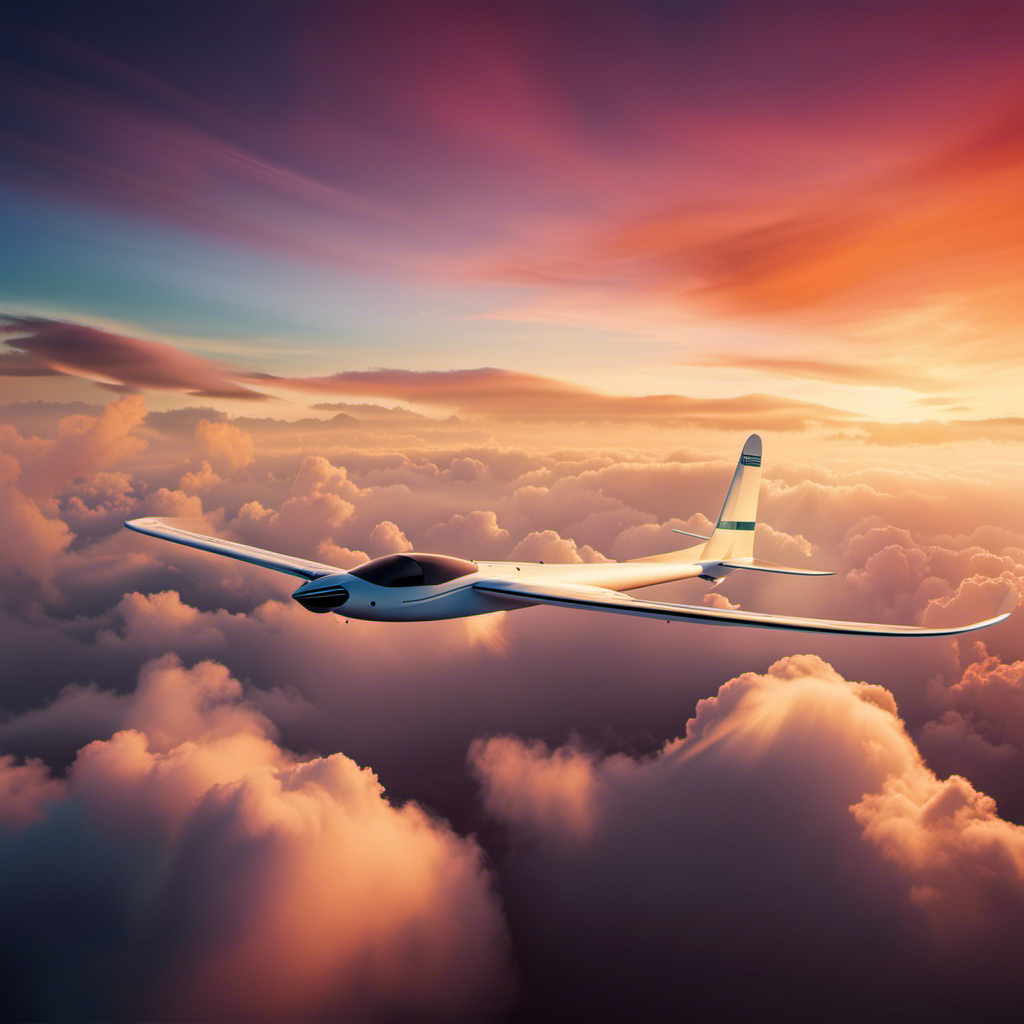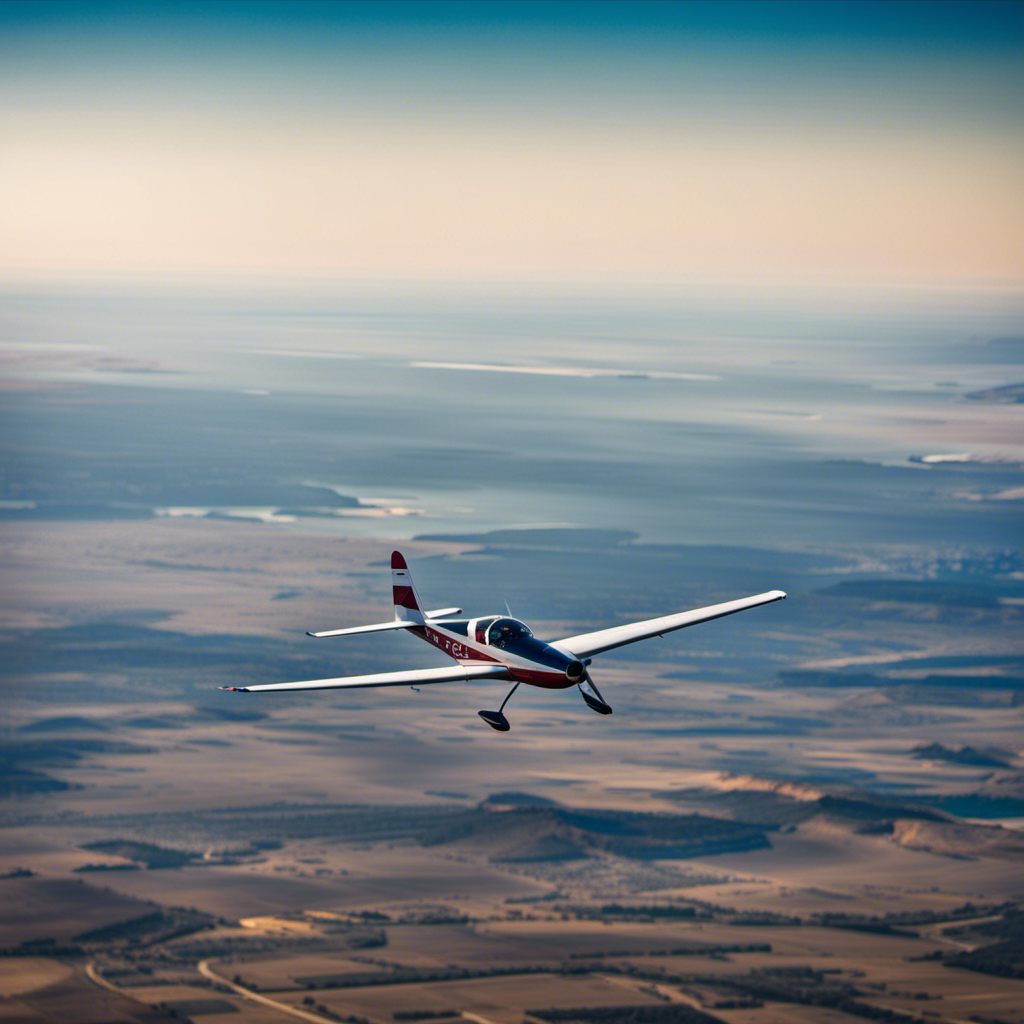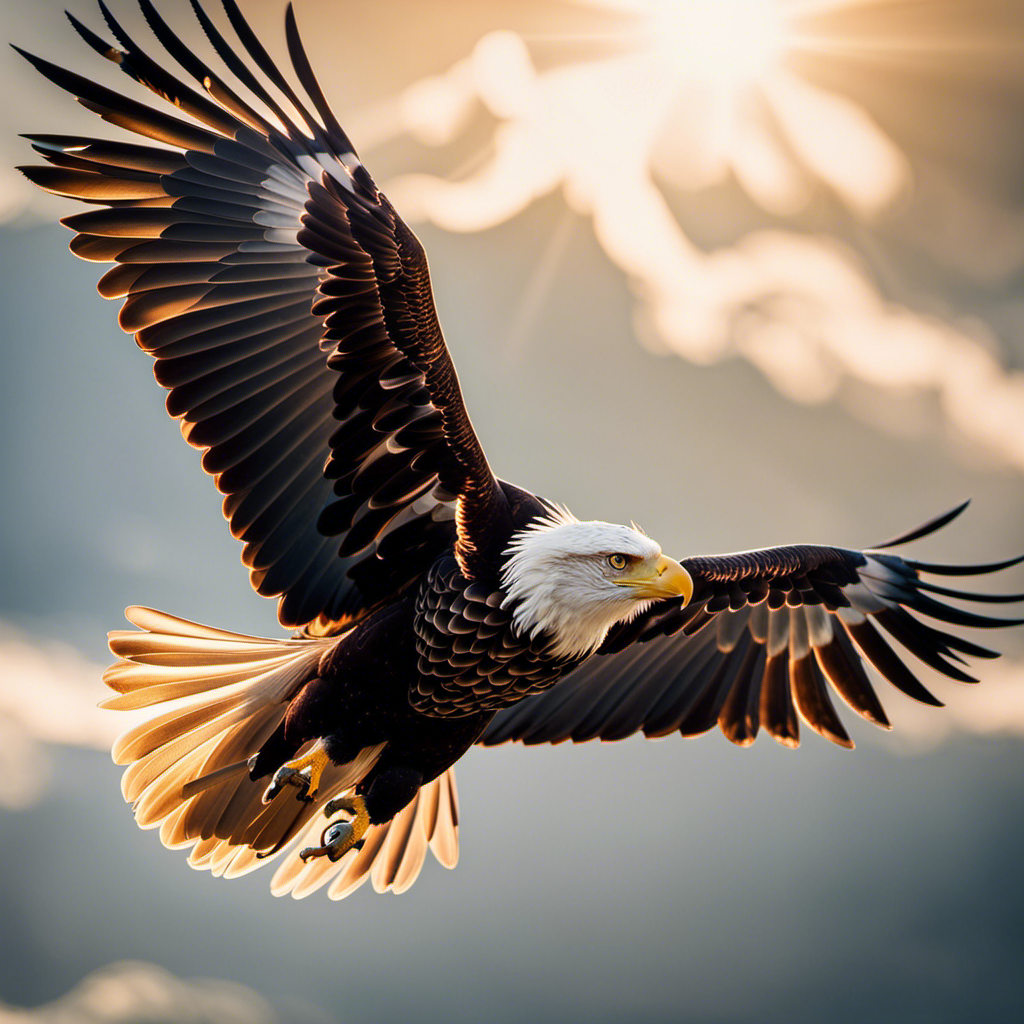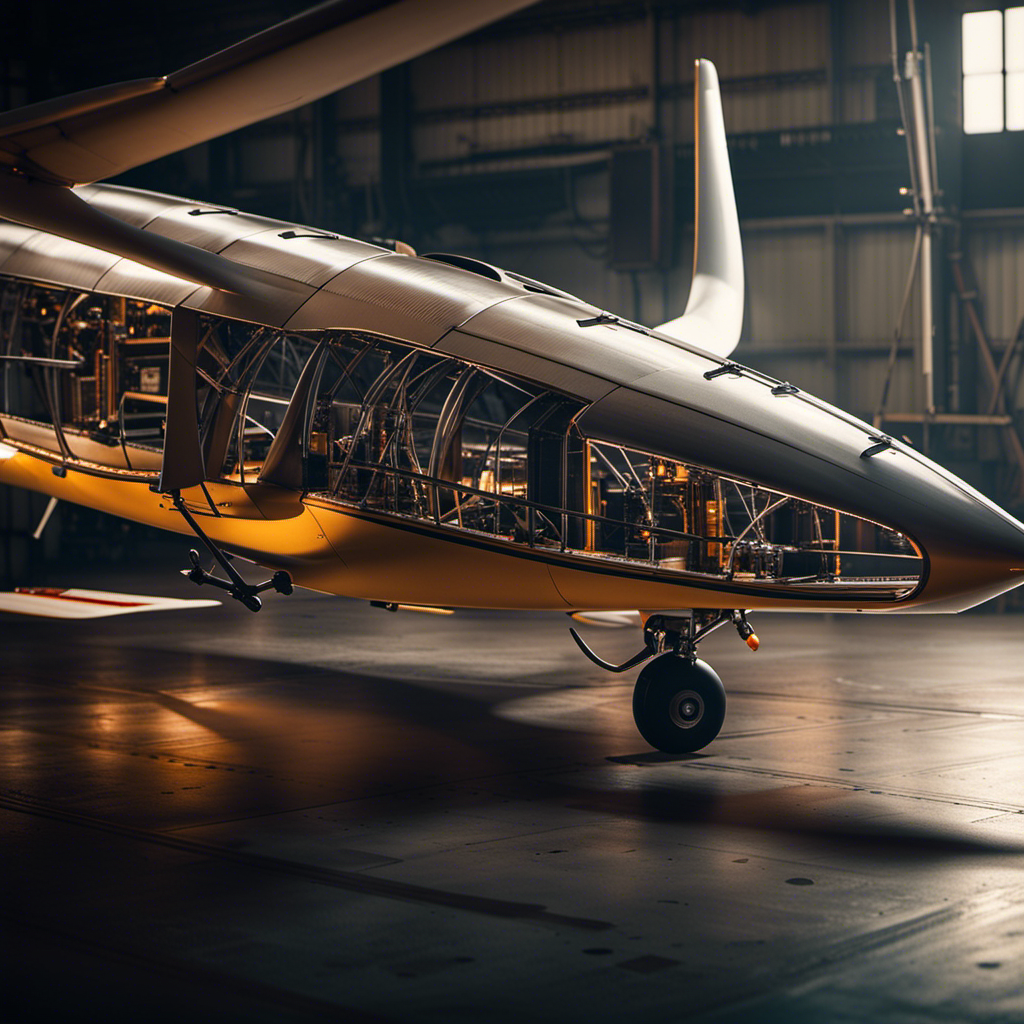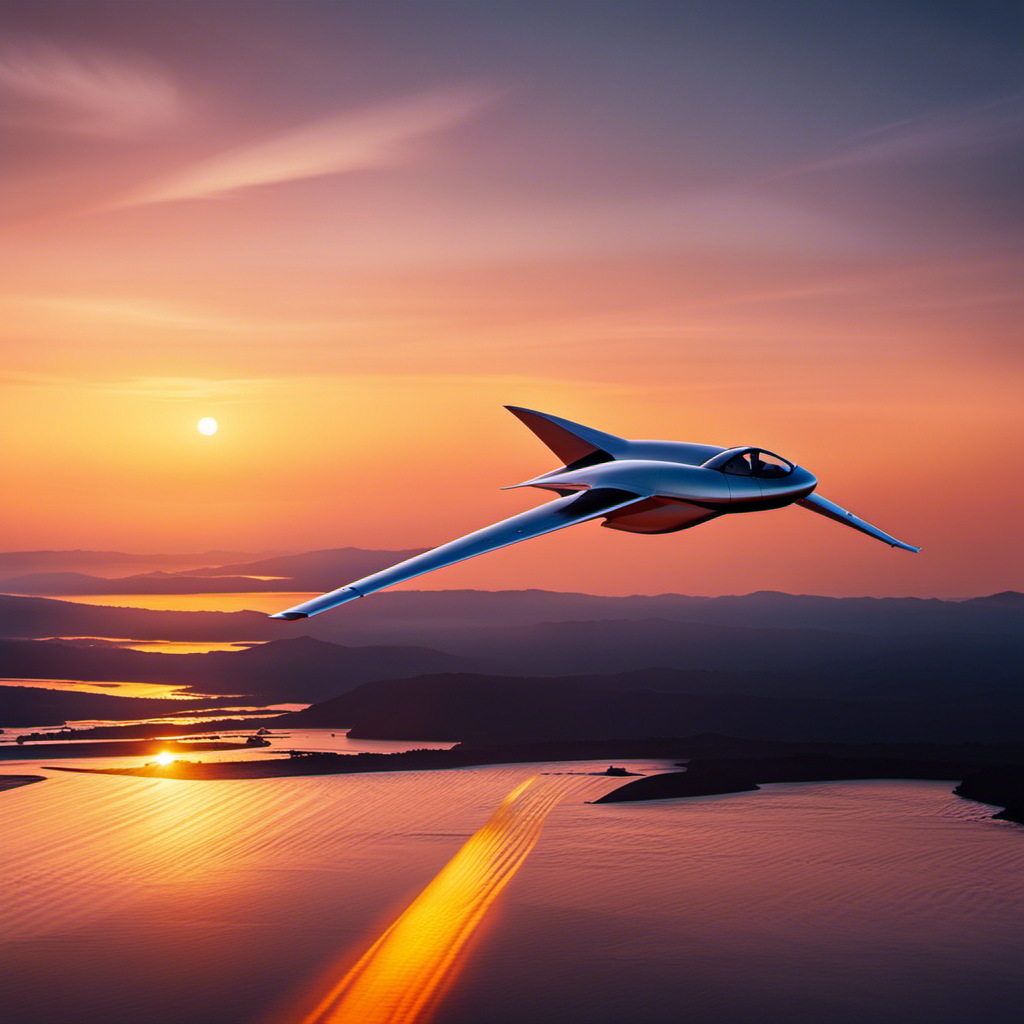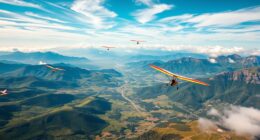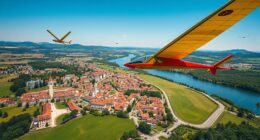As a passionate pilot, I can confirm firsthand that the excitement of soaring through the sky in a sailplane is unmatched.
If you’ve ever dreamed of experiencing the freedom of flight without an engine, then obtaining a glider license is your ticket to reaching new heights.
In this comprehensive guide, we’ll explore the basics of glider flight, the benefits of obtaining a glider license, and the step-by-step process to becoming a certified glider pilot.
So buckle up, because we’re about to embark on an extraordinary journey of discovery and adventure.
Let’s dive in!
Key Takeaways
- Diligent study and practice are essential for mastering glider regulations, flight maneuvers, airspace rules, emergency procedures, weather interpretation, and navigation techniques.
- Accurate and complete application submission, including necessary documentation and proof of age and medical fitness, is crucial for obtaining the glider license without delays.
- Obtaining the glider license provides legal permission to fly gliders and signifies the completion of the licensing process and achievement of pilot status.
- Continuing education, networking, mentorship, and a focus on advancing skills are vital for ongoing growth, skill enhancement, and professional development as a glider pilot.
The Basics of Glider Flight
Flying a glider requires a unique set of skills and knowledge. As a glider pilot, I have gained firsthand experience in the basics of glider flight. Gliders, also known as sailplanes, are aircraft that are designed to fly without an engine. They rely on the natural forces of the air, such as thermals and ridge lift, to stay in the sky.
To operate a glider, one must understand aerodynamics, weather patterns, and navigation techniques. Additionally, glider pilots must be proficient in the art of soaring, which involves finding and utilizing rising air currents to gain altitude and extend flight time. Mastering these fundamentals is crucial for safe and successful glider flying.
Now, let’s explore the benefits of obtaining a glider license, which go beyond the joy of soaring through the sky.
The Benefits of Obtaining a Glider License
As you explore the world from above, you’ll quickly discover the countless advantages of getting certified to pilot a glider. Not only does a glider license open up a whole new realm of adventure and freedom, but it also provides you with valuable skills and knowledge that can enhance your overall piloting abilities.
With a glider license, you’ll have the opportunity to experience the pure joy of soaring through the sky, harnessing the power of nature without the noise and reliance on an engine. Additionally, obtaining a glider license can lead to opportunities for competition, aerobatics, and even becoming a flight instructor.
So, whether you’re a seasoned pilot or just starting out, obtaining a glider license is a worthwhile endeavor that will enrich your flying experience and broaden your horizons.
Now, let’s delve into understanding the requirements for a glider license.
Understanding the Requirements for a Glider License
To obtain a glider license, you’ll need to meet certain requirements set by the aviation authorities. These requirements ensure that you have the necessary skills and knowledge to safely operate a glider.
First and foremost, you’ll need to be at least 16 years old to apply for a glider license. Additionally, you’ll need to pass a medical exam to demonstrate that you are physically fit to fly.
The next step is to complete the necessary training, which includes both ground and flight instruction. You’ll need to log a minimum number of flight hours and pass a written and practical exam.
Once you meet these requirements, you’ll be ready to take your glider license to new heights.
Now, let’s explore finding a certified glider flight school.
Finding a Certified Glider Flight School
When searching for a certified glider flight school, you’ll want to consider factors such as location, instructor qualifications, and student reviews. These factors can greatly impact your training experience and determine the quality of instruction you receive.
Here are some key points to keep in mind when evaluating potential flight schools:
-
Location:
-
Is the school conveniently located for you?
-
Does it offer a suitable flying environment, such as favorable weather conditions?
-
Are there any specific geographic features that may enhance or limit your training opportunities?
-
Instructor qualifications:
-
Are the instructors certified and experienced in glider flying?
-
Do they have a good track record of training successful pilots?
-
Are they knowledgeable about the latest safety regulations and techniques?
-
Student reviews:
-
What do past and current students have to say about their experience at the school?
-
Are there positive testimonials that highlight the school’s strengths?
-
Are there any negative reviews or concerns raised by students?
By considering these factors, you’ll be able to make an informed decision when choosing a certified glider flight school that best suits your needs and goals.
Once you’ve found the right school, the next step is enrolling in glider training courses.
Enrolling in Glider Training Courses
Once you’ve found the right school, you’ll need to enroll in glider training courses to begin your journey towards becoming a certified pilot. These courses are designed to provide you with the necessary knowledge and skills to safely operate a glider. During the training, you will learn about the principles of aerodynamics and glider control.
Understanding how air flows over the wings and how to manipulate the flight controls is crucial for a successful and safe flight. You will also learn about different flight maneuvers, emergency procedures, and meteorology.
Additionally, the training will include practical flying sessions, where you will gain hands-on experience under the guidance of a qualified instructor.
Learning the Principles of Aerodynamics and Glider Control
Understanding how air flows over the wings and how to manipulate the flight controls is crucial for a successful and safe glider flight. Here are three key principles of aerodynamics and glider control that every aspiring pilot should know:
-
Lift: Lift is the upward force generated by the wings as air flows over them. By adjusting the angle of attack and controlling the airspeed, pilots can maximize lift and keep the glider airborne.
-
Drag: Drag is the resistance that opposes the glider’s forward motion. Minimizing drag is essential for maintaining speed and efficiency. Pilots can reduce drag by keeping the glider streamlined and avoiding unnecessary movements.
-
Weight and Balance: Proper weight distribution is important for stability and control. Pilots must ensure that the glider’s center of gravity is within the specified limits to maintain proper handling characteristics.
With a solid understanding of these principles, pilots can confidently navigate the skies.
Now, let’s explore the next crucial step: gaining practical flight experience.
Gaining Practical Flight Experience
Now that I have a solid understanding of the principles of aerodynamics and glider control, it’s time to gain practical flight experience. This is an essential step in obtaining a glider license as it allows me to apply the knowledge I have acquired and develop my flying skills.
Practical flight experience involves actually piloting a glider and experiencing the different aspects of flight firsthand. During this stage, I will learn how to perform pre-flight inspections, takeoff and landing procedures, and various flight maneuvers.
It is important to log a sufficient number of flight hours to demonstrate proficiency and competence in handling a glider. This practical experience will prepare me for the next phase of the licensing process: passing the written and practical exams.
Passing the Written and Practical Exams
To successfully pass the written and practical exams, you’ll need to demonstrate a thorough understanding of glider regulations and confidently perform a range of flight maneuvers. This ensures that you have the knowledge and skills necessary to operate a glider safely and effectively.
During the exams, you will be tested on various topics, including airspace rules, emergency procedures, weather interpretation, and navigation techniques. Additionally, you will be required to showcase your ability to execute maneuvers such as takeoffs, landings, turns, and stalls.
It is crucial to study diligently and practice regularly to master these skills. By doing so, you will be well-prepared to pass the exams and move forward in your journey towards obtaining your glider license.
Applying for and Obtaining Your Glider License
When applying for and getting your glider license, it’s important to gather all the necessary documentation and complete the required forms accurately. This includes providing proof of age, medical fitness, and completion of the required training hours. Additionally, you will need to submit your written and practical exam results along with any other supporting documents required by your local aviation authority.
The accuracy and completeness of your application will greatly affect the processing time, so it’s crucial to double-check everything before submission. Once your application is approved, you will receive your glider license, allowing you to legally fly gliders.
With your glider license in hand, you can now focus on continuing education and advancing your skills as a glider pilot.
Continuing Education and Advancing Your Skills as a Glider Pilot
As a pilot, it’s essential to continuously seek opportunities for further education and skill development in order to advance your abilities in flying gliders. Continuing education is crucial for staying updated on the latest techniques and technologies in the field.
By participating in advanced training courses, attending workshops, and engaging in flight simulator sessions, you can enhance your knowledge and proficiency in glider piloting.
Additionally, joining glider pilot associations and clubs can provide valuable networking opportunities and access to experienced mentors who can offer guidance and support.
It’s important to remember that the learning process never stops, even after obtaining your glider license. By actively seeking opportunities for growth and improvement, you can take your skills as a glider pilot to new heights.
Frequently Asked Questions
Are there any age restrictions for obtaining a glider license?
Yes, there are age restrictions for obtaining a glider license. The minimum age requirement is typically 14 years old, although some countries may have different age limits.
How long does it usually take to complete the glider training courses?
Glider training courses typically take several months to complete. Students must demonstrate proficiency in areas such as aerodynamics, meteorology, and flight maneuvers. The duration of training may vary depending on individual progress and weather conditions.
Can I use my glider license to fly in other countries?
Yes, a glider license obtained in one country can be used to fly in other countries, as long as you comply with the specific regulations and requirements of each country.
Is there a weight limit for becoming a glider pilot?
There is no weight limit for becoming a glider pilot. All individuals, regardless of their weight, can pursue a glider license. This inclusive aspect of gliding allows people of all shapes and sizes to experience the freedom of soaring through the sky.
Can I still fly a glider if I wear glasses or contact lenses?
Yes, you can still fly a glider if you wear glasses or contact lenses. As long as your vision is corrected to meet the required standards, there are no restrictions regarding eyewear.
Conclusion
In conclusion, obtaining a glider license is like spreading your wings and embracing the freedom of the sky.
It is a journey of dedication and skill-building that opens up a world of possibilities.
With the right training and experience, you can soar like a bird, defying gravity and experiencing the exhilaration of flight.
So don’t wait any longer, take the leap and embark on this incredible adventure.
Your glider license awaits, ready to take you to new heights.
Remember, the sky’s the limit!
With a heart that soars as high as the skies, Aria, affectionately known as “Skylark,” is the driving force behind Soaring Skyways. Her journey into the gliding world began as a young dreamer gazing up at the soaring birds, yearning to experience the weightlessness and freedom they embodied. With years of experience both in the cockpit and behind the scenes, Aria’s commitment to the gliding community is unwavering.
